During the holiday season here I had some time to tackle some of the projects that have been on my todo list for ages. One of these projects was improving the video output from my Aquarius. Last time I hooked it up, the picture was pretty horrible. It may have been a flaky RF switch box but an RF modulated video signal isn’t really ideal in the first place. Searching around, I found some schematics for the Aquarius so I thought this project would be a piece of cake.
It appeared to be a simple matter of removing the RF modulator from the board and then grabbing pin 1 and feeding it to a RCA jack and feeding pin 3 to another for sound. When I did that though, I got video like this:
It was at this point that I realized the project might not be as easy as I first thought. I decided that the problems was a weak signal so I set out to try to amplify it.
I was a little puzzled as to why such a weak signal worked fine for the RF modulator but not for the TV. When I looked at the signal on a scope, it looked fine:
But then when I put a resistor across the signal to load it down, it squashed down to nearly nothing. Apparently the RF modulator doesn’t have much of a load at all since it has no 75 ohm cable termination to deal with.
I unsuccessfully tried a couple of single transistor emitter-follower circuits such as this NES Video Booster circuit that I found. While it improved the signal, it didn’t entirely fix the problem. My friend suggested a purpose built video buffer chip such as the MAX4090. Oddly, he had a roll of 200 of them laying around that he never found a use for. I hooked it up on my breadboard to check it out:
Success! That worked pretty well. I started with the reference circuit found in the MAX4090 datasheet but found that it worked best with only the one cap installed on the output. I omitted all of the resistors from the circuit and the decoupling cap on the vcc. Just in case though, I designed my PCB off of the reference schematic:
In case you are wondering about the red +5v line, I got that from the bottom of the board. The 5v regulator line is very clearly marked on the solder side over near where the three wires from the regulator go under the metal shield. I just followed it as close to the former location of the RF modulator and grabbed it there.
If you like the content on this site, please support it by using this link to order from Amazon. You know you were going to go there and buy stuff anyhow so why not help me pay the hosting bill.


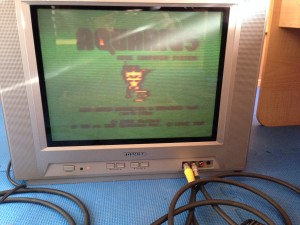
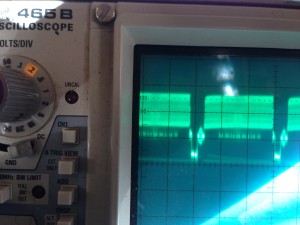
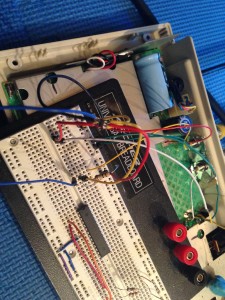
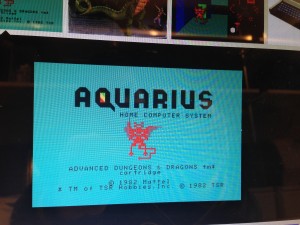
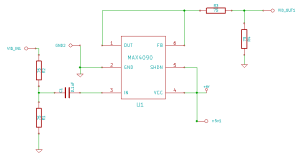
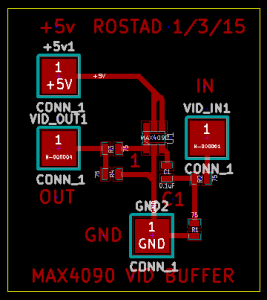
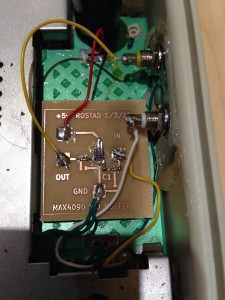
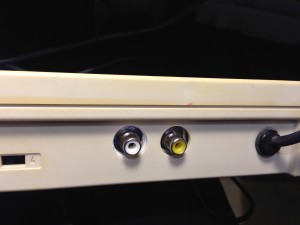

Thanks you for your informative and heartfelt blog posts in support of the Aquarius. Very interesting reading.
Forgive my ignorance here, I have an Aquarius and a very basic knowledge of electronics – Is it possible for me to do this AV modification on my own Aquarius? Am I right in assuming it could it be done with 4 x 75ohm resistors, a 0.1uF capacitor, two AV outputs and a max4090 chip? Would it need a breakout board or could the whole thing just be soldered together with normal wires? Also where do you get something like a max 4090 chip?
Glad you are still trying to enjoy your Aquarius too. I used the MAX4090 because it was something I had available. There are lots of video buffer chips out there. I would suggest just looking for something similar to that chip. That particular chip has long since end of lifed. Of course there’s not really much demand for a video amp mostly suitable for analog composite signals these days. 🙂
You don’t NEED a PCB but it definitely made this project turn out a lot cleaner. I don’t believe this chip comes in a through hole version. If you don’t want to go to the trouble of making a PCB, go on eBay and search for “SOT23 breakout board”. Something like that will do the trick.
If you really get in a bind finding that chip, hit me at geordy___at__h o t m a i l and I’ll see if I can’t find a couple laying around in my parts bin.
Hello again, I sent an email but it either didn’t get through or the answer was no. So assuming no, if I push on and try to do this myself, would something like either of these chips be usable?
– TEXAS INSTRUMENTS SN74LS07D
– Fairchild DM74LS244
Thanks and regards.
Hi,
This is good! Question:
You said: “I started with the reference circuit found in the MAX4090 datasheet but found that it worked best with only the one cap installed on the output. I omitted all of the resistors from the circuit and the decoupling cap on the vcc. Just in case though, I designed my PCB off of the reference schematic:”
But your Kicad layer out still has those resistors. Also, I am surprised that you eliminated the decoupling cap.
Thanks.
Probably shouldn’t have but it seems to work about as well as I would expect a composite signal to work.